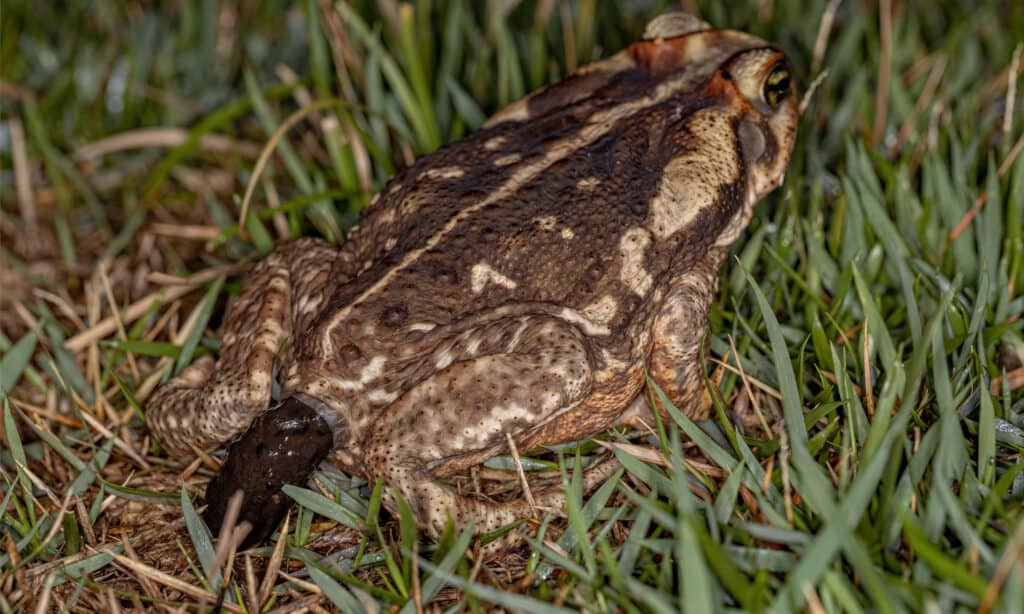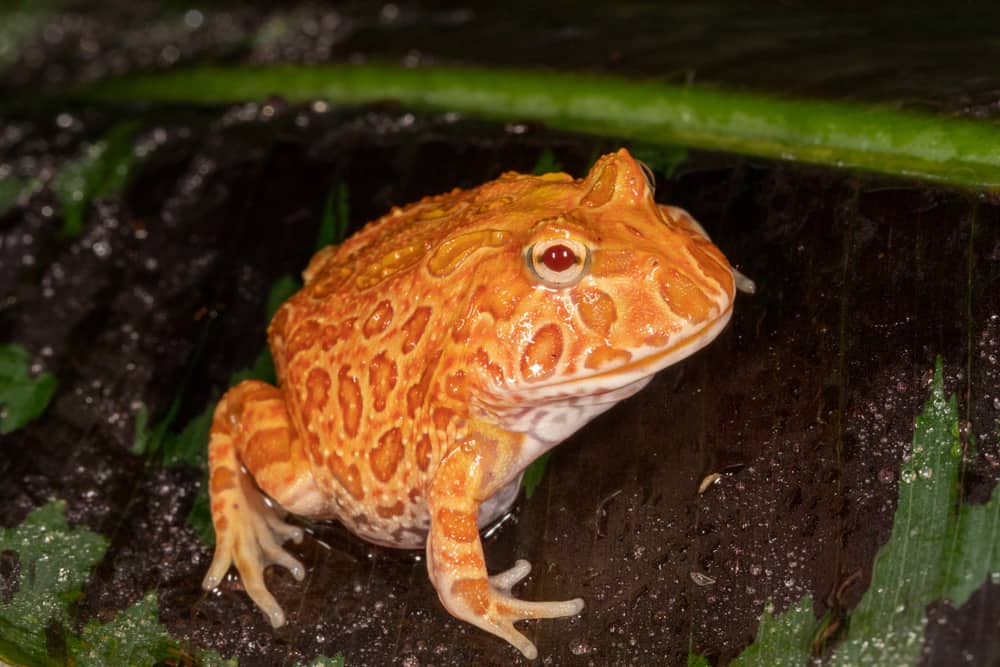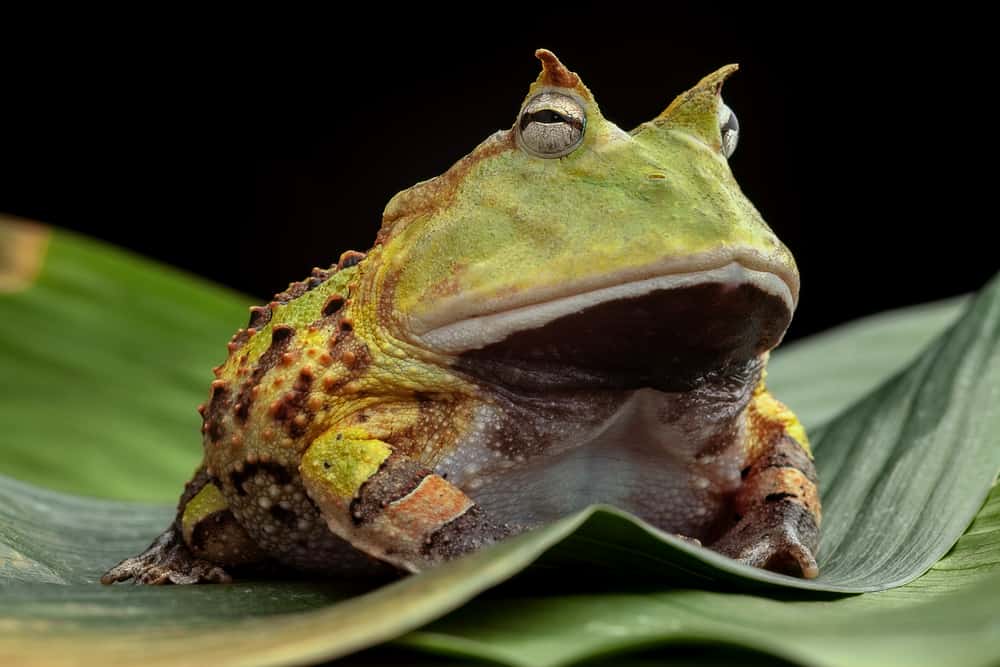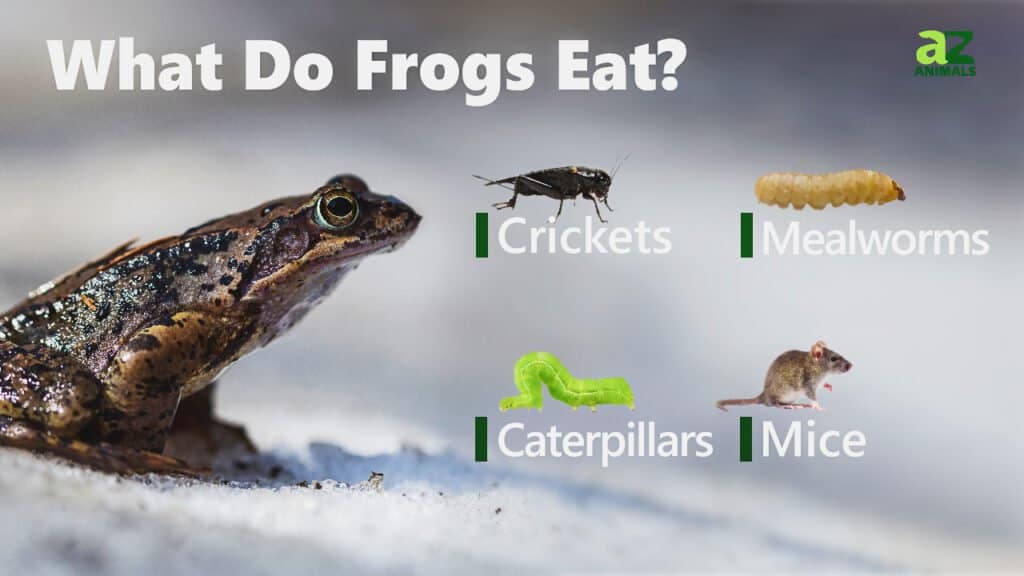The frog is the most widespread and abundant of the three main orders of amphibians, and it is also the only one without a tail. These creatures have a hunched body, webbed toes, large, protruding eyes, and moist skin. For frog enthusiasts, learning about frogs can be interesting, from their diets to their sounds to where they prefer to live. However, one area that may not be as researched as other topics is what a frog’s poop looks like.
If you haven’t seen one, you might assume that frog feces are tiny, similar to rabbit droppings, given that frogs are small. However, it isn’t anything like that: frog poops are not cute little rabbit poops. So what exactly does a frog poop look like?
In many ecosystems, frogs are an important component. Although many animals eat them as their main course, we know these little creatures also aid in controlling the local insect population. Due to their enormous efforts, frogs need to let out some “big ones” from time to time. In this article, you will learn what frog poop looks like, how they do their “business,” and other fascinating facts.
What Does Frog Poop Look Like?
Frog poop typically measures roughly a quarter of the size of a frog’s body, which is enormous for a poop. The poop of a frog is a cylindrical, brown substance that is often damp or wet and can be found in whole sections or smaller parts. Frog poop that has just been emitted is typically a very dark brown to a black color and appears to have a shiny surface. However, it quickly dries out and loses much of its gloss and silkiness.
Poop color changes can happen and can be caused by a change in diet. This is not always a sign of unhealthiness. It occasionally becomes red, but this should not be a reason to be worried because it is merely the result of a dietary adjustment. Additionally, hydration has an impact on the poop’s consistency and color.
Why is a Frog’s Poop So Big?
You might be curious as to why frog poop is frequently so big; the simple answer is that frogs consume more food than is appropriate for their size. Since frog stomachs are quite huge for them, they typically eat enough food, such as insects, to fill them completely. Depending on how much food they eat at once, it might even increase their body size.
When they get a meal, they will consume all of it in one go out of fear. They are afraid because they don’t know when their next meal will be and because other predators might come along and take the food. Eating results in enormous banquets, and as the proverb says, “Whatever goes in must come out.” Fortunately, Mr. Frog’s body is built for this, so what would be a painful experience for any other animal is completely natural for the frog.
It also fits in well with their means of survival and is extremely fascinating. Along with other cutting-edge adaptations for various species living in various environmental niches, their bodies can store a significant amount of fat to assist them in enduring prolonged periods of scarcity.
How Do Frogs Poop?

The poop of a frog is a cylindrical, brown substance that is often damp or wet.
©iStock.com/ViniSouza128
Amphibians, birds, reptiles, and sharks expel waste through the cloaca opening. The reproductive system, urinary tract, and digestive tract are connected by a single entrance called this cloaca or vent, and both liquid and solid waste are expelled by the cloaca.
The mouth is where digestion starts. Several frog adaptations allow the complex digestive process to proceed quickly and effectively. The tongue, saliva, and stomach contribute to the process until the meal is ejected as a stool. Frogs quickly gain weight and slow down if they don’t poop. Constipation can cause respiratory problems, intestinal wall rupture, and eventually death.
Does a Frog’s Poop Smell?
Frog feces does have a smell, just like the poop of any other animal, and some people have claimed that it smells somewhat like dog poop and is just as pungent as the poop of any other kind of pet.
How Often Do Frogs Poop?

Adult frogs usually relieve themselves once or twice a week.
©Strawberry Pineapple Albino morph of the Pac Man Frog/Shutterstock.com
If you’ve ever wondered how frequently healthy frogs should poop, the answer depends on the frog’s age. Adult frogs usually relieve themselves once or twice a week. However, adult frogs don’t actually need to poop that often; in fact, they could be able to go up to two weeks between the times they poop. On the other hand, juvenile frogs may poop regularly. Really, it depends on what stage of life the frog is at. Some ages of frogs poop more frequently than others.
How much frogs eat may also immediately impact how frequently they poop. A frog that consumes more food will defecate more often than a frog that consumes less food.
Where Do Frogs Poop?
Everywhere! You got that right; it is everywhere. Naturally, there is a chance to find frog feces anywhere there is a chance of finding a frog. The frog prefers to live in water, so you might find its waste at the edges of ponds or lakes, in tanks, swimming pools, or in moist, damp areas. But these aren’t the only places you might find frog poop; quite frankly, you might find it depending on whether frogs are present there, such as at door edges, window sills, etc.
Due to the larger likelihood that frog food (i.e., insects) will be available at night, frog poop is more likely to be found in highly illuminated areas.
What Happens if a Frog Poops in the Pool?
Unfortunately, frogs that don’t get out of your pool quickly are almost guaranteed to poop there. The frog will eventually die from the chemicals, which will cause them to lose their bowels. One of the more recent issues has been pool contamination with frog poop. If you have this problem, you should consider constructing fences around your pool to keep the frogs out and ensure a clean pool free of frog poop.
The key is to clean your pool if it has already become infected with frog waste. Closing the pool first, donning disposable gloves second, and then collecting the waste with a net and pail are the steps you need to take. To ensure that the pool is poop-free, remove as much poop as you can, and do not forget to properly dispose of it.
Is There a Difference Between Frog Poop and Toad Poop?
Toads and frogs are closely related, like peas in a pod. As a result, it is quite difficult for an untrained eye to identify them apart. Most toad species are larger than most frog species; hence, they also have larger poop. Because toads and frogs are closely related, toad poop resembles frog poop quite a lot. So the size is typically what distinguishes toads from frogs’ poop.
Toads devour a lot of food at once, much like frogs do. They act in this manner because they are unsure of their next meal. They must also poop a lot because they eat so much. Like frogs, toads can expel large amounts of feces. Thus, they feel no pain when releasing large amounts of waste almost every other day.
Is Frog Poop Dangerous?

The potential for catching pinworms is another potentially hazardous side effect of handling frog poop.
©Dirk Ercken/Shutterstock.com
Frog poop poses very little danger to humans. It is not directly harmful, but you should still handle it cautiously. Frog poop might contain hazardous bacteria and parasites that may affect you if you touch them.
Salmonella, the pathogen in charge of food poisoning, is one of these disease-producing bacteria. Salmonella infections can cause severe flu-like symptoms, such as vomiting, diarrhea, and fever.
The potential for catching pinworms is another potentially hazardous side effect of handling frog poop. If you let a pinworm get in contact with your mouth, nose, or eyes, it could attach itself to you. Pinworms are a frequent parasite that affects both amphibians and humans. Additionally, compared to other worm species, this parasite causes more infections.
Due to the danger of infection from these sources and more, you should always properly wash your hands after touching frog poop. Use an antibacterial disinfectant and a towel or rag to adequately wipe up any frog excrement that may have found its way into your home.
What Do Frogs Eat?

What comes out of the other end of a frog depends on what it consumes. By and large, frogs are carnivores, though some will also eat plant matter. Let’s take a look at the different types of food a frog eats.
- Insects
- Mollusks
- Birds
- Rodents
- Fish
- Algae
- Spiders
- Reptiles
- Amphibians
- Aquatic plants
The photo featured at the top of this post is © Vladimir Turkenich/Shutterstock.com
Thank you for reading! Have some feedback for us? Contact the AZ Animals editorial team.







